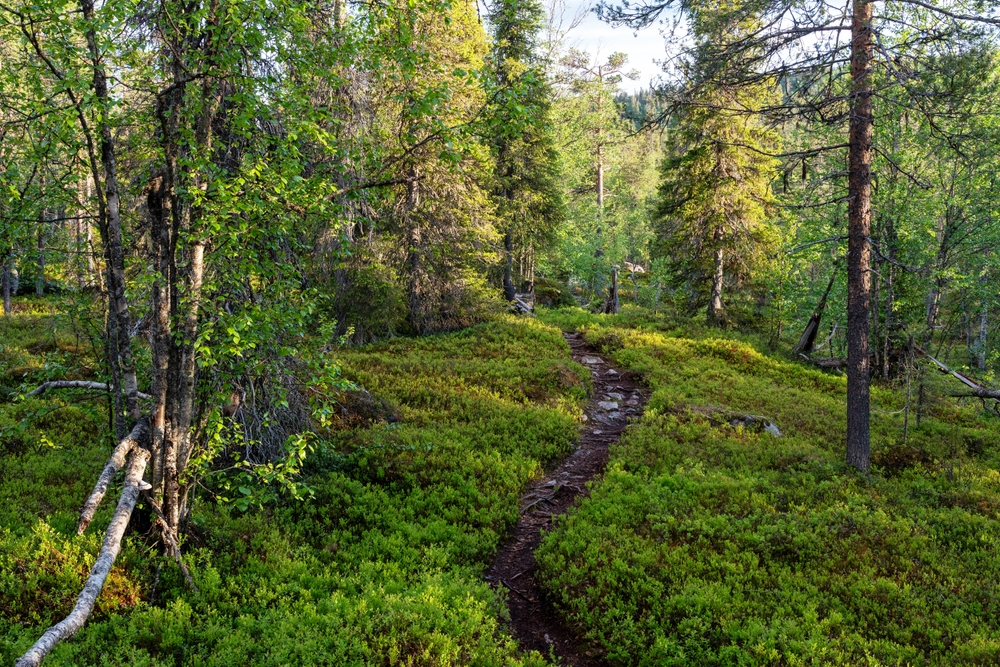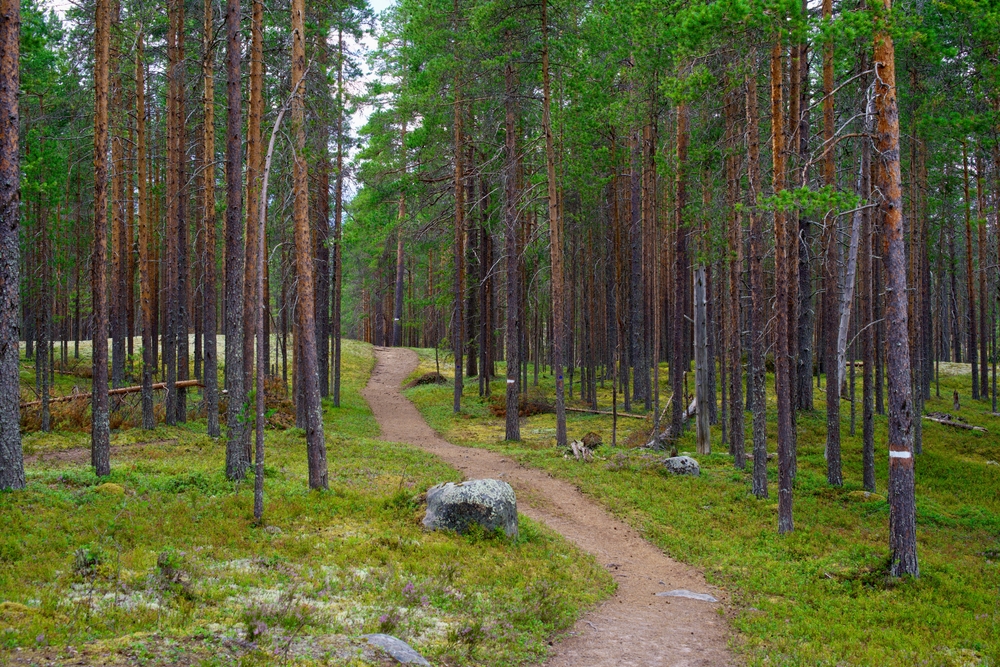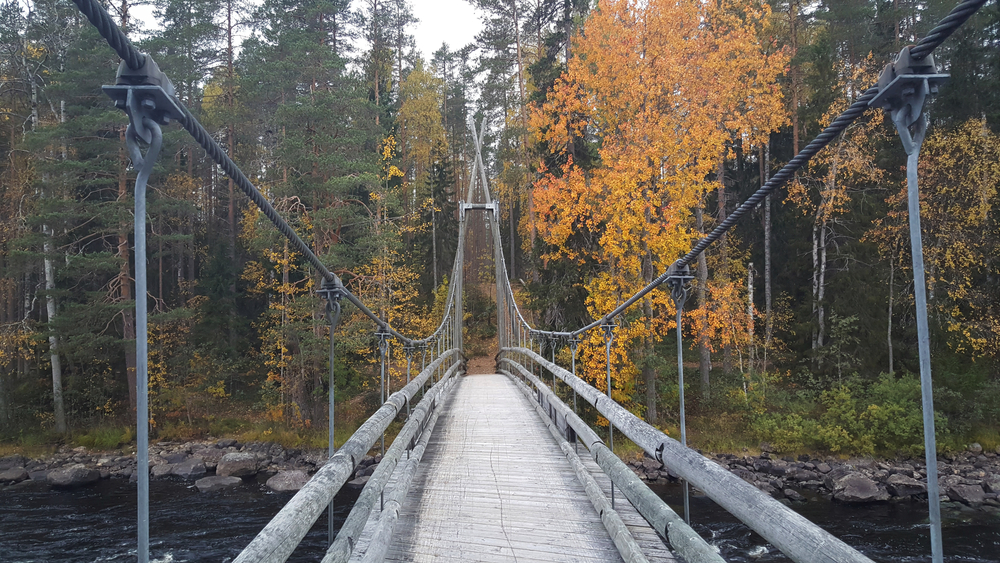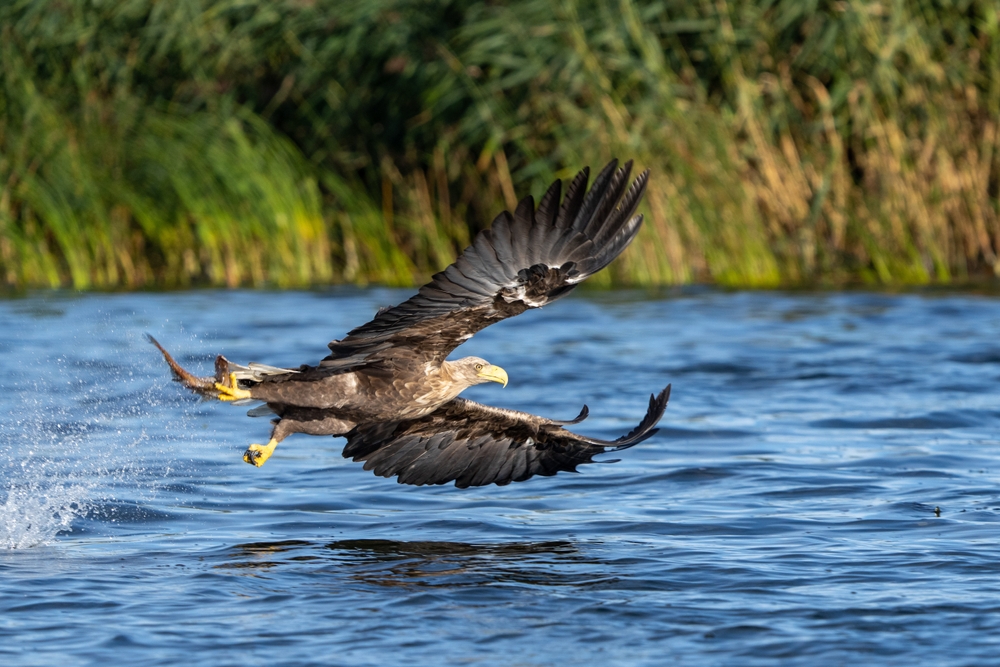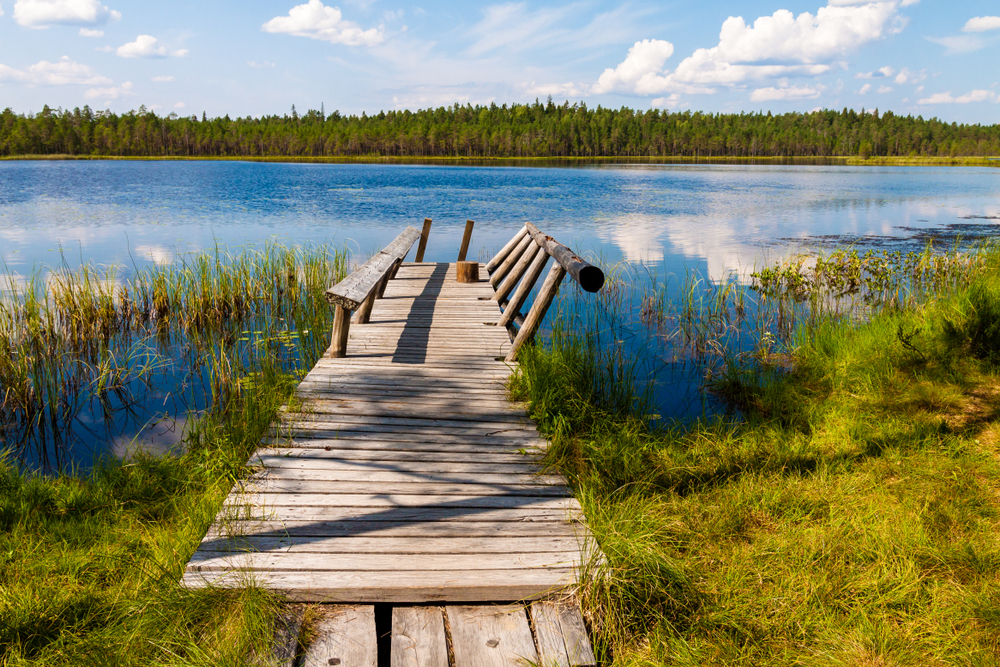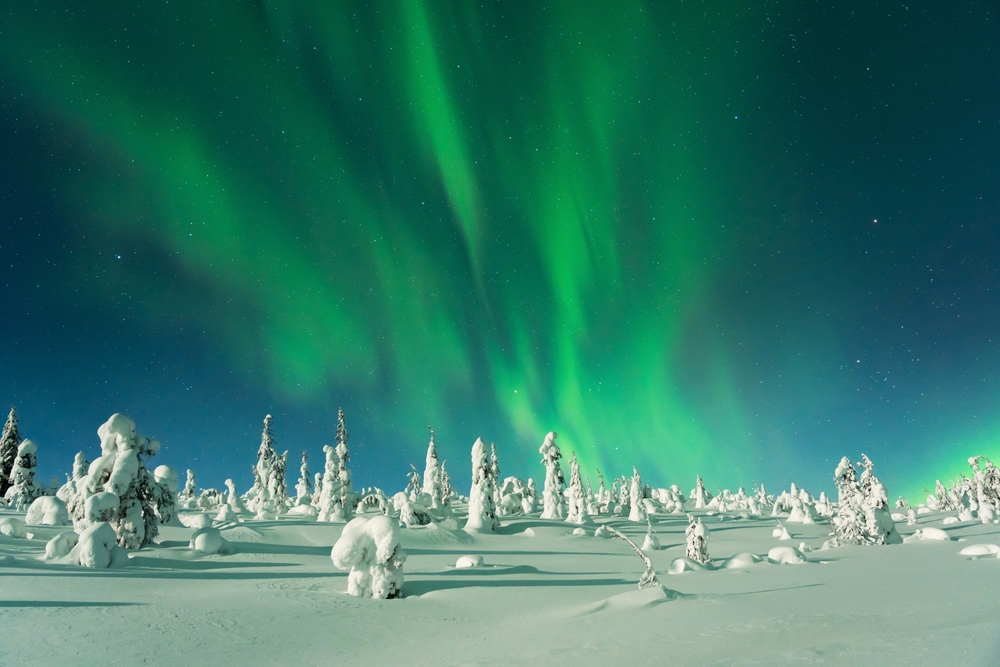Salla Overview
Salla National Park, known locally as Sallan Kansallispuisto, is a stunning protected area in Finnish Lapland, officially established in 2022. Covering approximately 38 square miles (100 square kilometers), the park is located near the small municipality of Salla, close to Finland’s border with Russia.
The region is well known for its remote wilderness, unspoiled landscapes, and deep cultural ties to the Sámi people, Finland’s indigenous population. This relatively new national park was created to preserve its rich biodiversity, fragile arctic ecosystems, and the unique geological features that define the area.
The park’s terrain is characterized by rolling fells, ancient boreal forests, and expansive mires, offering a mix of rugged highlands and peaceful lowlands. The fells, including Sallatunturi, are among the defining features of the landscape, providing panoramic views of the vast wilderness.
During the winter, these hills are blanketed in deep snow, making the area a winter wonderland, while in summer, the tundra and taiga come alive with lush greenery and wildflowers. Numerous small lakes, ponds, and streams are scattered throughout the park, adding to its tranquil beauty. In autumn, the landscape bursts into vibrant hues of red, orange, and gold, making it a prime spot for ruska, the Finnish term for fall foliage viewing.
Salla National Park is home to a rich variety of wildlife that thrives in its diverse habitats. Large mammals such as brown bears, moose, and wolverines can be found roaming the forests, though they are often elusive. Reindeer, both wild and domesticated, are a common sight, reflecting the deep connection between the Sámi people and reindeer herding. Smaller mammals such as arctic foxes, pine martens, and red squirrels also inhabit the park.
Birdwatchers can spot species like the Siberian jay, golden eagle, and black woodpecker, as well as migratory birds that pass through the region during the summer months. The pristine lakes and wetlands also attract waterfowl such as whooper swans and various duck species.
One of the highlights of Salla National Park is its accessibility to outdoor recreation and adventure activities. Well-marked trails invite visitors to hike through the park’s breathtaking landscapes, with options ranging from easy walks to challenging treks up the fells. In the winter, the park transforms into a haven for snowshoeing, cross-country skiing, and even northern lights viewing, as the region experiences little light pollution.
The park is also a fantastic destination for wilderness camping, with designated areas allowing visitors to experience the solitude of Lapland’s vast wilderness. For those interested in cultural experiences, Salla’s local history and Sámi heritage can be explored at nearby visitor centers and reindeer farms.
Despite its relative newness, Salla National Park faces conservation challenges, including the threat of climate change, which is rapidly altering the arctic and subarctic ecosystems. Rising temperatures impact snowfall, permafrost, and wildlife migration patterns.
However, the establishment of the park itself is a major success in conservation, as it ensures the protection of this fragile region from industrial threats like logging and mining. Park authorities and local conservation groups are actively monitoring wildlife populations and promoting sustainable tourism to minimize environmental impact. By prioritizing eco-friendly travel and responsible visitor behavior, Salla National Park aims to preserve its breathtaking natural beauty for generations to come.








































































